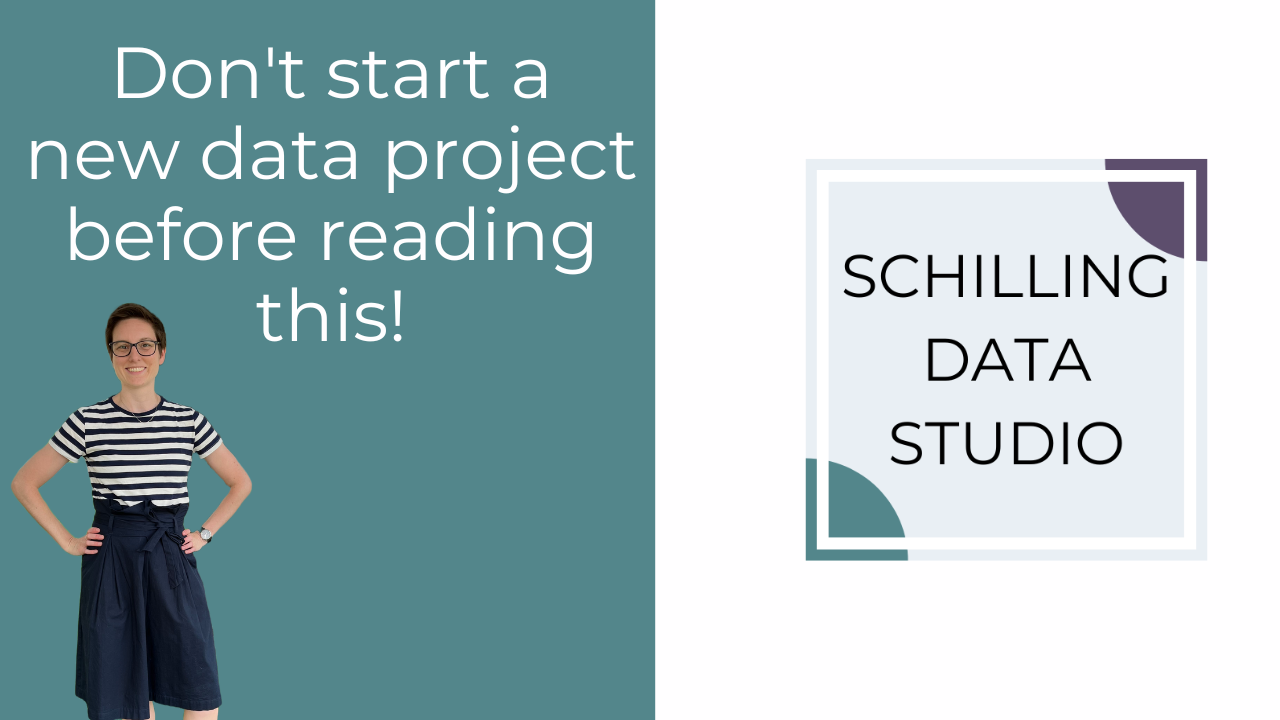Don't start a new data project before reading this!
Apr 12, 2023
Last month, when I shared the challenges about meeting data needs from a client, I got a great question about how to go about data translation: figuring out the difference between what the client is asking for and what they actually want.
Here are the questions to make sure that what you produce meets what the client needs:
1. What is the goal?
Find out what the client's goal is and what question they're trying to answer. Do they want to look at a trend over time? Or are they trying to make comparisons?
Figure out what they need to know. Getting clear on this upfront will make sure you're aligned with their request.
Some additional questions to ask in this step include:
- What question would you like to answer with the data?
- Why is this the question?
- Who's the audience for this visualization?
Sometimes a client might ask for one thing, but in having a conversation about their request, you'll find they actually want something slightly different. That's why these questions are so important.
2. Are we aligned on data definitions?
Now, you probably won't ask this question outright to your client, but the goal of this part of the inquiry process is to make sure that you have agreement on how metrics will be defined.
Explain how you define a metric and the different levels of detail available then find out if that matches what your client thinks.
For example, I love using the Palmer Penguins dataset when I teach R. In this dataset, each row represents a single penguin observation across different species, islands, and years.
If I am asked to count the number of penguins observed, I could check with the client to see if they want a count by year, a count by species, a count by island, or some combination of those characteristics.
I could also make sure that we agree on what is meant by "count". I might think they want me to count all the penguins in the dataset, but perhaps they only want to include penguins who have a complete data record (meaning there are no missing values).
3. What data is needed to meet this goal?
This is probably more of a question to ask yourself than the client, but in some cases the client may provide the data.
More often in my experience with data requests, I've been asked a question, established the data definitions, and then I gather the required data.
As part of this step, I make sure that I have all of the levels of detail (or categories) that I need and document the data definitions as well as the data source.
Save yourself (and your client some time) and get clear on the translation between what they say and what they actually mean right at the start.
Want more details on a design process to create data visualizations that meet client needs? Check out the free training and workbook on my Data Viz Design Process.
This post originally appeared in my newsletter, the Studio Scoop. Want more stories and data viz tips like this? Subscribe below.
Stay connected with news and updates!
Join our mailing list to receive the latest news and updates from our team.
Don't worry, your information will not be shared.
We hate SPAM. We will never sell your information, for any reason.
